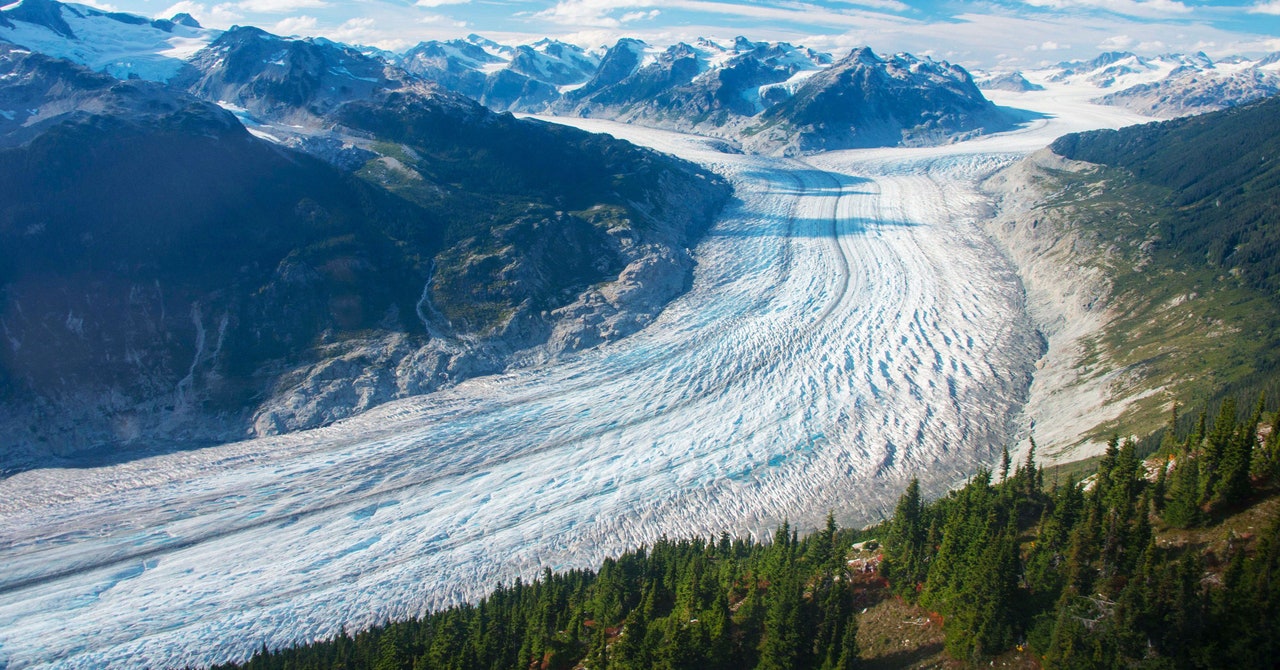
If you haven’t hiked across a glacier yet, you might want to get booted up sometime soon. The world’s high-mountain glaciers are melting faster than scientists previously thought; since 2015, they have been losing nearly 300 billion tons of ice per year. If this rate of melting continues, many could disappear entirely by the middle of the century, according to a comprehensive new study out today.
Researchers in Canada, France, Switzerland, and Norway collected 20 years of satellite images taken from a special camera on a NASA satellite called Terra. The device, called ASTER, for Advanced Spaceborne Thermal Emission and Reflection Radiometer, took images of more than 210,000 glaciers around the world, photographing each with two separate lenses to create three-dimensional views of their surface features. The study excluded the massive ice sheets that cover Greenland and Antarctica, which are being studied by other teams of scientists.
The new analysis, published today in the journal Nature, found that between the years 2000 and 2004, glaciers lost 227 billion metric tons of ice per year. But between 2015 and 2019, this rate increased to 298 billion tons annually, a change the study’s authors attribute to warmer temperatures and increased precipitation. Taken together, that meltwater running down rivers and into oceans represents about one-fifth of the observed rise in sea levels over the past 20 years.
And the problem isn’t just sea level rise, although that’s a significant issue, threatening the welfare of residents in coastal nations like Indonesia, Bangladesh, Panama, the Netherlands, and some parts of the United States. In some inland regions, millions of people depend on snowmelt for clean water; in years when there isn’t much snow, glaciers offer a backup water source. That’s especially true in parts of the Andes, the Himalayas, and Alaska. “They provide cool, plentiful water for many systems throughout the planet,” says Brian Menounos, professor of Earth sciences at the University of Northern British Columbia and an author on the new study. “Once those glaciers are gone, you don’t have that buffering capability.”
Menounos says that previous studies of glacial melting took fewer measurements in both space and time, leading to some fuzziness about how much the glaciers were actually shrinking. By using detailed satellite imaging, he says, “We were able to show that with our estimates, we greatly reduced the uncertainty.” To crunch the numbers for all 211,000 glaciers, it took a supercomputer at the University of Northern British Columbia running almost full-time for a year.
The new analysis provides a grim warning about the future, says Jonathan Bamber, a professor of geographical sciences at the University of Bristol who was not involved in the study. “This is the most comprehensive, detailed, and thorough assessment of global glacier mass loss over the 21st century ever undertaken,” he wrote in an email to WIRED. “The level of detail in the results enables us to see changes on individual glaciers across the world for the first time.”
Bamber says the analysis shows that if the trend continues, some low-altitude mountain regions will lose their glaciers entirely by the year 2050. “While the results and work are impressive, the headline message is pretty gloomy,” Bamber continued. “Glaciers are on the way out, with profound impacts for water resources, natural hazards, sea level rise, tourism, and local livelihoods.”
The study’s authors agree with that assessment, and Menounos said that some areas, like the Cascades and Montana’s Glacier National Park, will likely be ice-free by mid-century. “See them while you can,” he urges.


